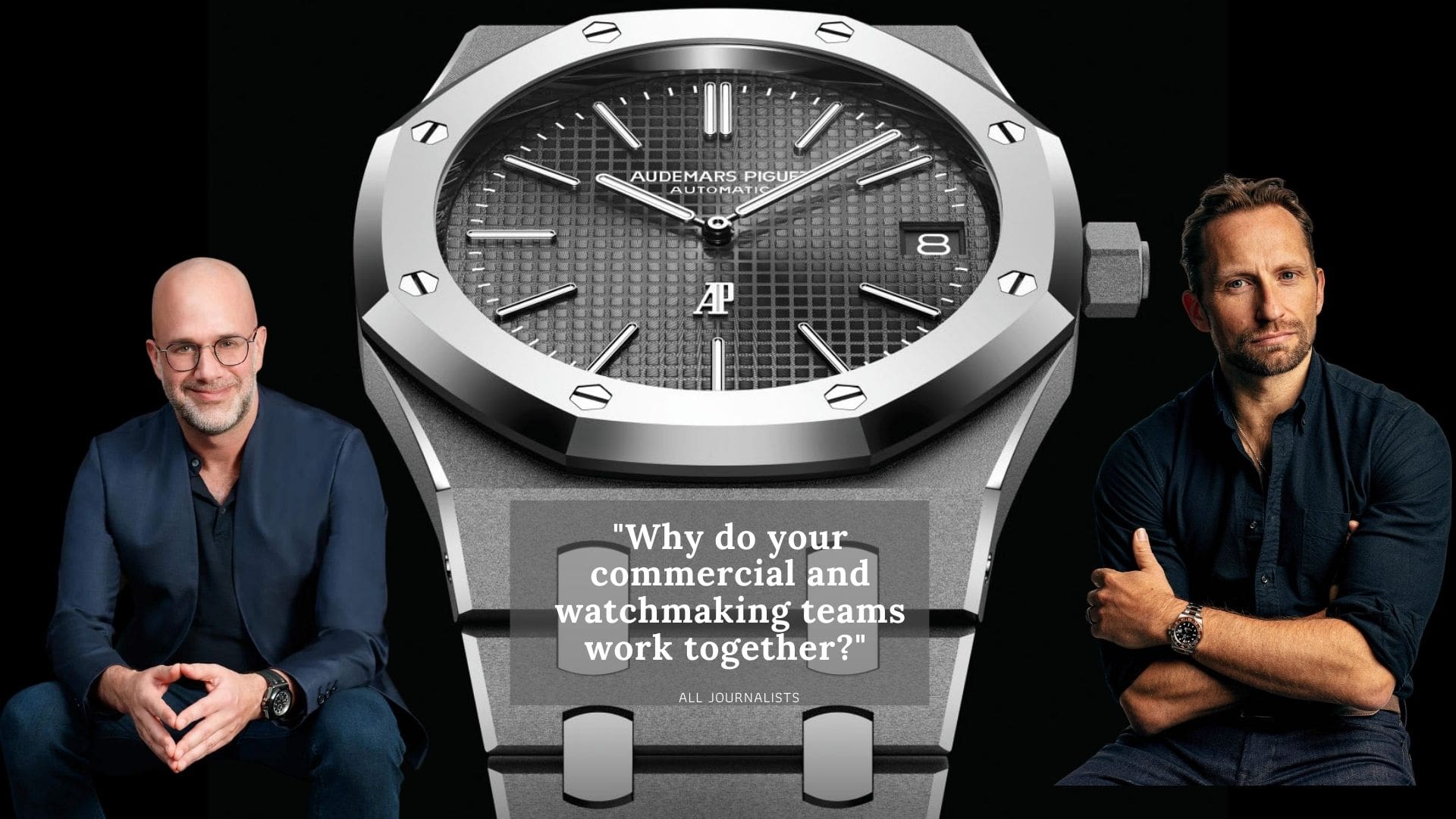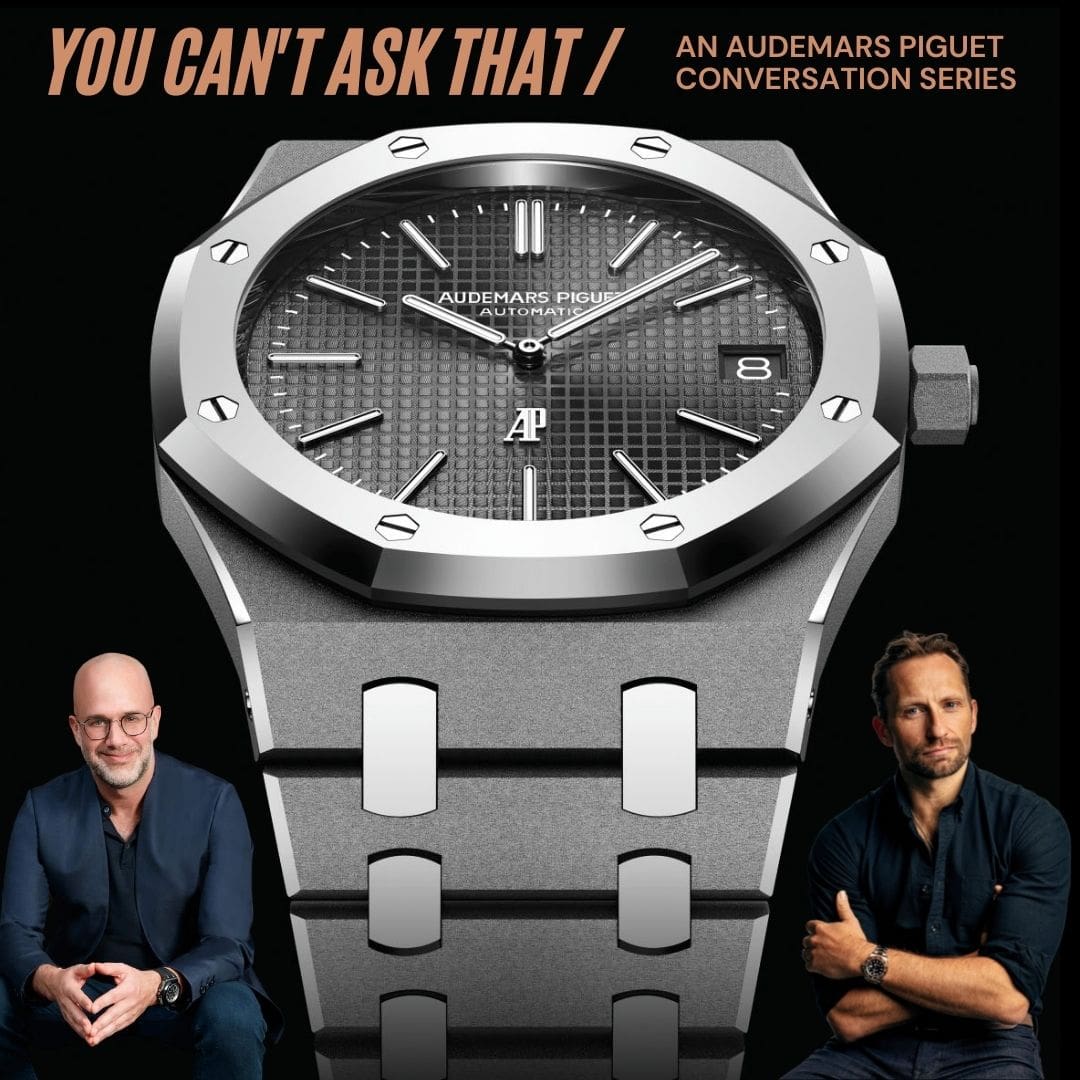You Can’t Ask That: A new conversation series with Audemars Piguet exploring all kinds of topics
Andrew McUtchenYou Can’t Ask That, Part 1: Why are AP collections always so controversial when they launch? Introducing a conversation series on YouTube…
This is the first video in a series of more conversational, and less directly watch-focused, videos that aim to provide richer telling of the Audemars Piguet story. The title refers to how direct and open Michael Friedman and Lucas Raggi have been in answering various, often quite direct, questions. These are videos to ultimately watch in sequence. Like a good series, there is an overarching narrative, as well as interesting focus points in each episode. We hope you enjoy this different style of content, and publish here the first three videos, with one to drop daily over the next four days.
There was a point when I fell down the rabbit-hole researching the launch of the Royal Oak Offshore collection. If you ever bother to read into it yourself, you’ll find it has all the elements of a great story: Including an impossibly handsome male lead in Emmanuel Gueit, the designer of the collection charged with building on, and accelerating the momentum of the revered Royal Oak. A new visage, a new physique for the changing times was required. But he was, of course, following on – very much like a new Bond – in the footsteps of the dashing Royal Oak inventor, Gérald Genta. To say the old guard handed the mantle over reluctantly to the new would be an epic understatement. Genta disliked the Offshore design so much that he wanted the Royal Oak removed from its name. He believed it “exaggerated” the watch’s design proportions. He was not a fan.
It was news to me. I’ve been as responsible as any watch journalist for perpetuating the mythology of the Royal Oak, and it’s outraged reception in 1972. But, to learn that the cycle repeated with the Offshore in 1993, and then, in conversation with Michael Friedman I discovered it happened yet again with the Concept in 2002, was quite the penny drop moment. It certainly gives the introduction of the form language of the Code 11.59 collection a new perspective. I had heard, through the watch industry grapevine, that while it was a surprise to me, the torrid initial reaction was not at all unforeseen by the leadership team of AP.
You Can’t Ask That, Part 2: Why did AP launch the Code 11.59 Collection with so many variations at once? What happened to the proven formula of starting with one, and building out?
This is the second video in a series of more conversational, and less directly watch-focused, videos that aim to provide richer telling of the Audemars Piguet story. Why is it called, You Can’t Ask That? These are questions and topics that don’t commonly get addressed in the interviews with either Lucas Raggi, the Research and Development Director, or Michael Friedman, Head of Complications.
Here’s an interesting statistic for you: 2022 will mark a decade since work began in earnest on the Code 11.59 collection. Lucas Raggi remembers the anniversary well, because he was in the team that started the project, way back in 2012, a full two years before Time+Tide existed. Lucas explains the rationale behind launching 13 Code references at the same time, with three references “completely new” for Audemars Piguet. “Remember,” says Michael at this point. “The Royal Oak, only one version from 1972 – 1976. Offshore, only one version from 1993 – 1997. The Concept, one version, from 2003 – 2005… The Code Collection was fundamentally different from that perspective.”
The broader story of this project touches on the ways Lucas and Michael have worked – and continue to work – together in the design and development of the watches, especially as it pertained to incorporating the complications that it would later house. “I sit together with Lucas and his team, I’m the naive kid in the room on those R&D meetings. I at least get to bring the energy of clients, collectors, enthusiasts into that room.”
You Can’t Ask That, Part 3: Why are the commercial and technical teams working more closely together at AP than ever? (And a cheeky wristcheck of both Michael and Lucas!)
This is the third video in a series of more conversational, and less directly watch focused, videos that aim to provide richer telling of the Audemars Piguet story. The last episode in the opening stanza delves into the unusual working style of the company at large – which is almost obsessively collaborative, an ethos so built into the way of working that it is literally reflected in the architecture of the building.
One interesting quirk at Audemars Piguet is the spirit of cross-pollination of disciplines and team members that prevails in so many working groups. To wit, the Head of Complications, Michael, often sits in with the watchmaking teams as they break down ideas that Michael shares based on conversations with collectors and clients. What is possible? What is fantasy? What is a fantasy that can be made real? Michael calls it “closing the circle” – and he believes that between himself and Lucas they “cover the whole 360 of a complication. From the second it is conceptualised, to the moment it is on a client’s wrist, and even the after service. Everything in between we are trying to put into one sphere.”





